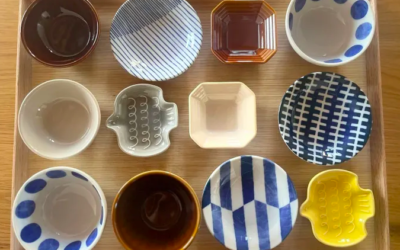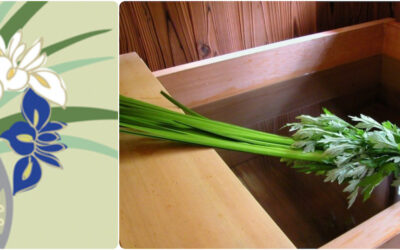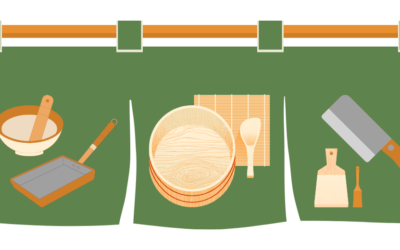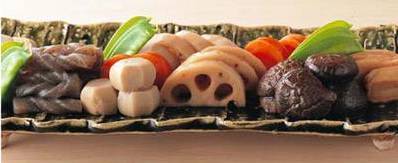
In the nishimé assortment pictured here, lotus root, carrots and country potatoes have been simmered Kansai-style while dried shiitaké mushrooms and konnyaku braids have been prepared Kanto-style.
NISHIMÉ・煮染め
Hundreds of variations on this classic soy-simmered dish exist, though basically they are of two sorts: deeply burnished Kanto-style nishimé cooked with regular (dark) soy sauce, and delicately hued Kansai-style nishimé, simmered with light-colored soy sauce (usukuchi shōyu).
The former mélange is favored in and around Tokyo and throughout the northern and eastern parts of Japan while the latter is popular in and around Kyoto and in the west and south.
Depending upon the selection of vegetables, I prepare some items (dried mushrooms, konnyaku, kelp knots) Kanto-style and others (lotus root, carrots, bamboo shoots, country potatoes) in the Kansai-style.
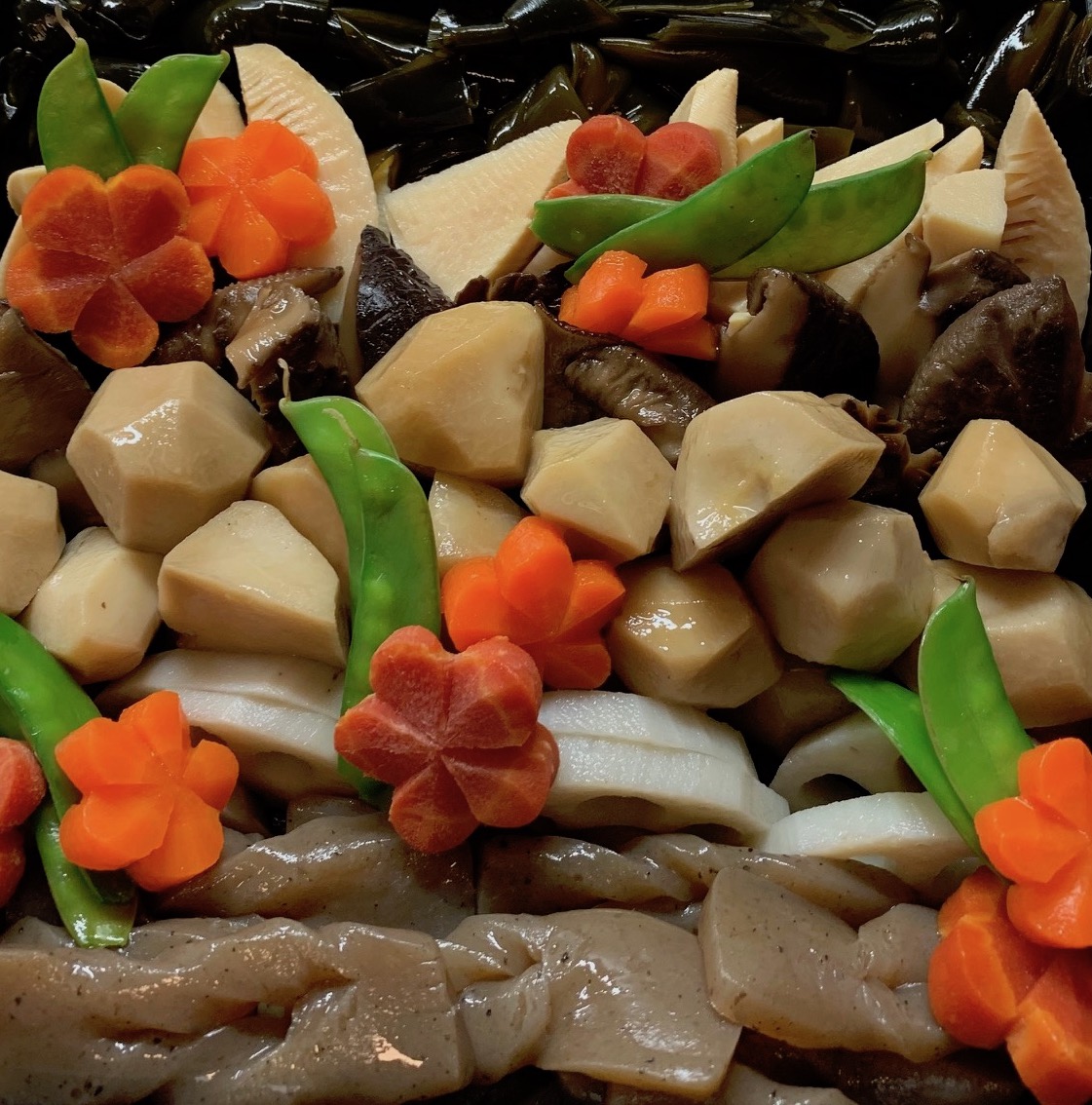
Nishimé arranged in a jūbako (multi-tiered box used to display holiday fare); carrots are cut and beveled to resemble plum blossoms
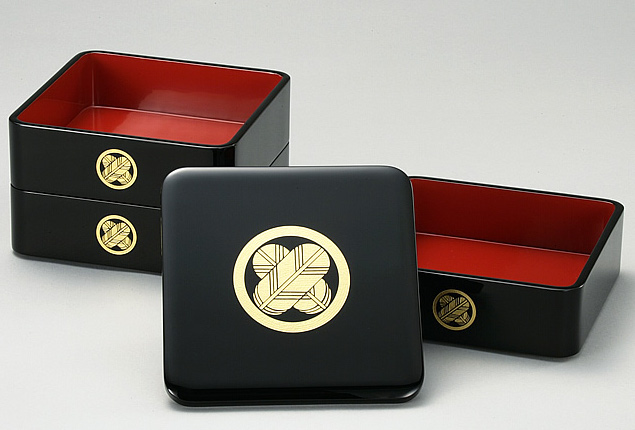
Each of the three lacquered boxes measures about 7.5 inches (19 cm) square x 1.5 inches deep; they stack to make a mini-tower with the lid on top.
Nishimé could easily appear at table anytime of the year but, because this simmered assortment can be made days ahead and keeps well at cool room temperature it makes perfect holiday fare. Traditionally enjoyed during Oshogatsu, Japan’s New Year holiday season, nishimé often occupies a single layer in the multi-tiered lacquer boxes called jūbako (literally “stacked boxes”). The layers of a jūbako stack one on top of the other; the top is covered with a lid. Jūbako boxes sit neatly stacked on a buffet and can also be easily passed around.
DOWNLOAD recipe for NISHIME classic 2 ways

